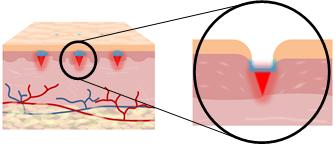Day 2 :
Keynote Forum
Hyungil Jung
Yonsei University, South Korea
Keynote: Microneedles: The future of painless drug delivery systems
Time : 10:00-10:35

Biography:
Hyungil Jung completed his PhD from Cornell University and his Post-doctoral studies from California Institute of Technology (Caltech). Since then he has received various awards such as “Outstanding Contributions”, “Best Contribution Award”, “Excellence in Research Award”, “The 31st Industry-academic Cooperation Award”, “Best technology Award”, “Best Teaching Award” and many more in the field of Biotechnology, because of his outstanding research ability in the field. He has also recently registered his company, Juvic Inc., to further expand his research and to introduce novel microneedle based pharmaceutical and cosmeceutical products in the market.
Abstract:
Microneedles are micro dimensional needles capable of delivering biological therapeutics as well as cosmetics into the skin without causing pain, in a minimally invasive manner. In addition, microneedles are referred as the future of drug delivery systems due to their advantages compared to currently utilized drug delivery routes including topical application and hypodermic injection. There are various types of microneedles including solid type, hollow type and dissolving type. Solid microneedles are used to create pores onto the skin by which the therapeutics can be delivered with a higher efficiency. Hollow microneedles are micro scale hypodermic needles that are less painful than normally used needles. Dissolving microneedles which have been receiving big attention in recent years are referred to a type of microneedle that encapsulates drugs within its polymer and delivers it into skin upon insertion through dissolving process. Each of these microneedle types, based on the application purposes can be applied in different branches of drug or cosmetic compounds delivery. Through microneedles, achievement of a highly efficient delivery has become possible and we are expecting microneedles to replace the widely used hypodermic needles in the near future. We have so far developed various dissolving microneedle fabrication methods by which activity of encapsulated therapeutics within microneedles can be maintained the most. Centrifugal lithography (CL) is one of the recently developed fabrication methods that can be used for the fabrication of microstructures by a single centrifugation, and engineering the self-shaping properties of hyaluronic acid (HA). We have also developed microneedle implantation systems by which dissolving microneedles can be fully inserted into the skin in a minimally invasive manner.
Keynote Forum
Kostas D Demadis
University of Crete, Greece
Keynote: Smart, programmable and responsive injectable hydrogels for controlled release of cargo osteoporosis drugs
Time : 10:35-11:10

Biography:
Kostas D Demadis is a Full Professor in the Department of Chemistry, University of Crete, Greece and Head of the Crystal Engineering, Growth & Design Laboratory. His research group is interested in a number of research areas such as coordination polymers with emphasis on metal phosphonate MOFs, functional polymers, silicon chemistry (modeling of biosilicification mechanisms), water treatment issues (mineral scale inhibition, corrosion control, metal ion absorption), controlled release of active ingredients (in particular bisphosphonate drugs), “green” chemistry, and hybrid polymeric materials for cultural heritage protection. He has published ~150 papers in peer reviewed journals, about a dozen chapters in books, four books, and is the inventor of two patents.
Abstract:
Gel systems have found extensive applications in the medicinal/pharmaceutical field because of their ease of preparation, ability for modifications and responsiveness to external chemical or physical stimuli. Gels usually act as hosts for active pharmaceutical agents for a variety of pathological conditions. Among the known bone diseases (osteoporosis, osteoarthritis, multiple myeloma, Paget’s disease and several others), the most challenging is osteoporosis, which burdens millions of people compromising patients’ quality of life. The recommended pharmaceutical treatment is the use of bis-phosphonates (BPs, a.k.a. “-dronates”). Their success in mitigating osteoporosis, notwithstanding these “-dronate” drugs present a number of challenges including fast excretion, and numerous side-effects, such as osteonecrosis of the jaw, hypocalcemia, esophageal cancer, ocular inflammation, atrial fibrillation, etc. Nevertheless, the main drawback of BPs is their limited oral bioavailability. It is, therefore, imperative to design and fabricate “smart” systems that allow controlled delivery of the active BP agent, which will depend on the patient’s needs and idiosyncrasies. In this presentation we discuss easy-to-prepare drug delivery systems, based on smart, silica gels. These have been synthesized, characterized, and studied as hosts in the controlled release of several bisphosphonate drugs. They exhibit variable release rates and final % release, depending on the nature of bisphosphonate (side-chain length, hydro-philicity/-phobicity, water-solubility), cations present, pH and temperature. These gels are robust, injectable, re-loadable and re-usable.

